
Roots
Our hair, a crown of identity and story, often whispers its needs to us. We listen for signs of thirst, of fatigue, of a yearning for something deeper than surface shine. In this quiet conversation, silk proteins have begun to speak a compelling language, moving beyond their well-known role in creating a smooth, lustrous finish. To truly understand their potential, we must first journey to the very core of what hair is, how it lives, and how these delicate protein structures from the silkworm might truly become allies in its health.
The intricate architecture of a single hair strand, particularly for textured hair, reveals a complex world. Each strand is a marvel, primarily composed of a protein called keratin. This keratin forms the cuticle, the outermost protective layer, and the cortex, the inner core that lends hair its strength and elasticity. The cuticle, a series of overlapping scales, dictates how light reflects, how moisture enters and leaves, and how vulnerable the strand becomes to external forces.
When these scales lie flat, hair appears smooth and reflects light; when they lift, hair can feel rough, lose moisture, and become prone to breakage. This foundational understanding sets the stage for appreciating how external applications, such as silk proteins, might interact with our hair’s very being.

The Architecture of a Hair Strand
Delving deeper into hair’s fundamental makeup, we find that the cuticle, while appearing simple, plays a complex role in hair’s overall well-being. This layer, composed of dead, flattened cells, acts as the hair’s primary defense. Beneath it lies the cortex, which accounts for the bulk of the hair shaft and contains the melanin responsible for color, along with bundles of keratin proteins held together by disulfide bonds.
These bonds are the secret to hair’s resilience and shape. Any disruption to this delicate balance, whether from environmental stressors, styling practices, or chemical treatments, can compromise the hair’s integrity, leading to issues that surface-level solutions cannot fully address.
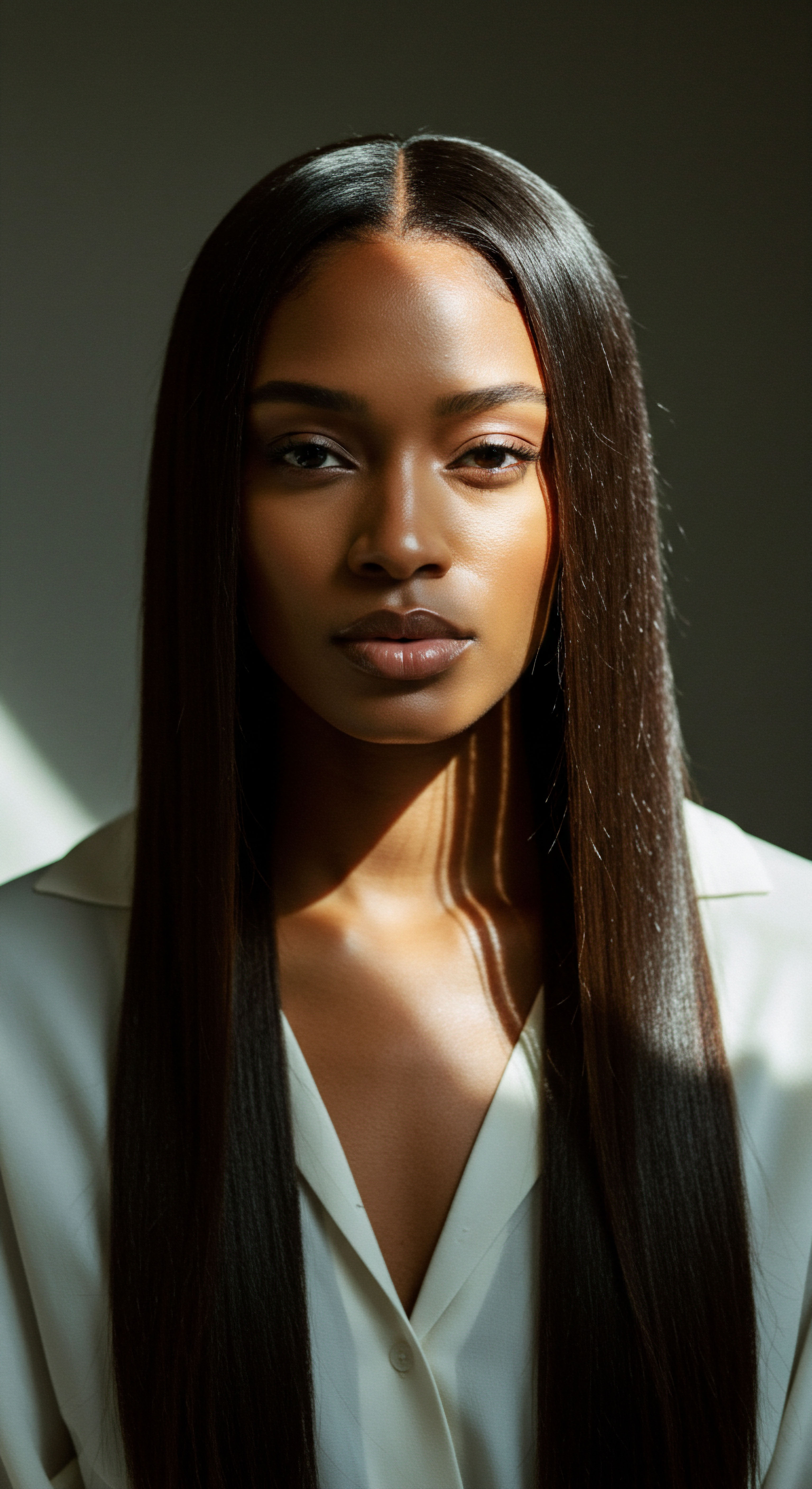
Silk Proteins ❉ Building Blocks of Benefit
At its origin, silk is a natural protein fiber produced by silkworms, primarily the mulberry silkworm. It consists of two main proteins ❉ Fibroin, which forms the structural core of the silk fiber, and Sericin, a gummy protein that binds the fibroin strands together in the cocoon. Both have distinct properties that offer unique benefits.
When we talk about silk proteins in hair products, we are often referring to hydrolyzed versions – meaning these larger proteins have been broken down into smaller molecules, such as peptides and amino acids, through processes like hydrolysis or fermentation. This reduction in molecular size is a critical factor in their ability to interact with hair beyond simply coating the surface.
The efficacy of silk proteins in hair care extends beyond superficial sheen, owing to their capacity to interact with the hair’s internal structure.
These smaller, hydrolyzed silk proteins possess a lower molecular weight, enabling them to penetrate the hair shaft more effectively than their larger, intact counterparts. This penetration allows them to reach the cortex, where they can provide more substantial benefits. Think of it as delivering nourishment directly to the hair’s inner sanctum, rather than just polishing its outer shell. The specific amino acid composition of silk proteins, particularly glycine, alanine, and serine, also plays a role in their affinity for hair’s keratin, allowing for a more harmonious interaction.
The difference in molecular weight between various proteins used in hair care dictates their depth of action.
| Protein Type Amino Acids |
| Molecular Size Smallest |
| Primary Interaction Deep penetration, internal repair, nutrient delivery |
| Suitable Hair Porosity All porosities, especially low |
| Protein Type Hydrolyzed Silk Protein |
| Molecular Size Small to Medium |
| Primary Interaction Penetrates cuticle, fills gaps, strengthens internally, forms protective film |
| Suitable Hair Porosity Low, Medium, High |
| Protein Type Hydrolyzed Keratin |
| Molecular Size Small |
| Primary Interaction Deep penetration, strengthens, restores elasticity |
| Suitable Hair Porosity High porosity, damaged hair |
| Protein Type Large Proteins (e.g. intact Keratin) |
| Molecular Size Large |
| Primary Interaction Surface coating, external protection |
| Suitable Hair Porosity Damaged or styled hair (less effective for low porosity) |
| Protein Type This table highlights how molecular size influences a protein's ability to benefit hair beyond its surface. |

Ritual
Moving from the foundational understanding of hair’s composition and silk’s molecular gifts, we now turn our attention to the tangible practices that bring these elements together. For generations, cultures around the globe have understood the protective and enhancing qualities of silk, not just as a fabric for adornment, but as a silent partner in hair wellness. The whispers of tradition, passed down through hands caring for hair, often held scientific truths long before laboratories confirmed them. These rituals, whether a simple nightly wrap or a meticulously crafted treatment, underscore a deeper connection to our hair’s vitality.

A Legacy of Silk in Hair Care
The historical use of silk in hair care is rich and spans continents. From ancient China, where Empress Leizu is credited with discovering silk around 2700 BC, its journey along the Silk Road introduced this prized material to diverse cultures. In East Asia, silk hair wraps were common for protection, maintaining elaborate styles, and signifying social status, with Japanese geishas using silk to preserve intricate hairdos while sleeping. Indian women used silk scarves to shield their hair from dust, sun, and pollution, recognizing its smooth texture for reducing friction and breakage.
In ancient Persia, silk wraps protected hair from harsh desert climates, helping maintain its luster. Even in Europe, during the Renaissance, silk bonnets became symbols of wealth and offered protection for elaborate coiffures. These practices, rooted in practical needs and cultural aesthetics, intuitively leveraged silk’s inherent properties to support hair health.
Across diverse cultures and centuries, silk has been chosen for hair protection, not just for its luxurious feel, but for its tangible benefits against environmental stressors and styling damage.
The use of silk bonnets and headwraps, particularly within Black hair culture, carries a significant history. Beyond mere fashion, these coverings have served as a tool for protection, preserving delicate styles, and safeguarding hair from environmental aggressors and friction during sleep. This practical application, which minimizes breakage and frizz, aligns with the scientific understanding of silk’s smooth surface and low absorbency, preventing the stripping of natural oils. This long-standing tradition is a testament to an intuitive understanding of silk’s benefits for textured hair, predating modern scientific analysis.
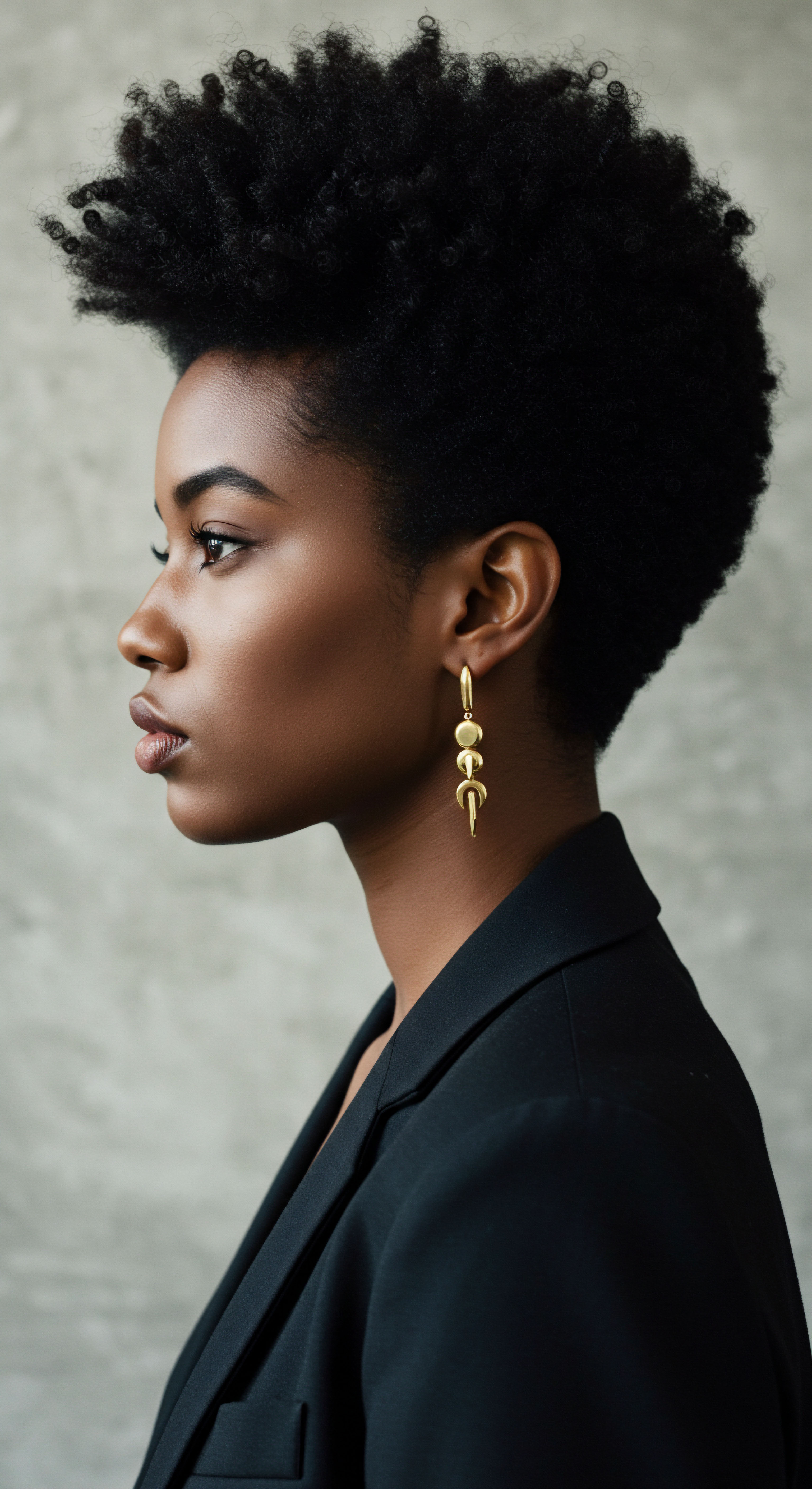
Applying Silk Proteins for Deeper Benefits
When silk proteins are incorporated into hair care products, they are typically in their hydrolyzed form, meaning they are broken down into smaller molecules that can interact more intimately with the hair shaft. This allows for benefits that extend beyond the surface layer. Hydrolyzed silk protein, often containing both sericin and fibroin components, has a low molecular weight, allowing it to penetrate the hair cuticle and even the cortex.
Once inside, these smaller protein fragments can help fill in gaps within the hair’s cuticle that are created by damage, thereby strengthening the hair from within. This internal reinforcement helps to rebuild the hair’s structural integrity, making it more resilient to breakage and environmental stressors. The interaction with the hair’s own keratin, its primary protein, is key here.
Silk proteins can bind to keratin, creating a protective barrier that seals in moisture and makes hair more manageable. This is especially beneficial for hair types prone to dryness or damage, as it helps to restore the hair’s natural moisture balance.

How Do Silk Proteins Strengthen Hair from Within?
The mechanism by which silk proteins contribute to hair strength involves their ability to interact with the hair’s internal structure. When hydrolyzed silk proteins penetrate the hair shaft, they can temporarily mend compromised areas within the cortex. This is not a permanent change to the hair’s inherent structure, but rather a restorative action that enhances its mechanical properties.
A study highlighted that the use of silk protein can lead to hair becoming 2.9 times more resistant to breakage compared to untreated dyed hair, a compelling indicator of its strengthening capacity. This suggests that the silk protein provides a scaffold or support system within the hair, allowing it to withstand greater stress before breaking.
Moreover, the presence of silk proteins has been shown to improve hair elasticity. Elasticity, the hair’s ability to stretch and return to its original shape, is a sign of healthy, resilient strands. Enhanced elasticity translates to better curl definition and reduced frizz, lending hair a more vibrant and supple feel. This improved flexibility means hair is less prone to snapping under tension, whether from styling, brushing, or environmental factors.
- Hydrolyzed Silk Protein works by filling in cuticle gaps, reducing porosity, and coating the hair.
- Silk Amino Acids, with their smaller particle size, offer deep penetration into the hair cortex.
- Sericin, one of silk’s two main proteins, contributes to hair elasticity and moisture retention.
The application of silk proteins can also influence hair’s thermal stability. For individuals who use heat styling tools, this is a significant consideration. Research indicates that proteins can provide a protective effect during heat application, by increasing the hair’s internal and external water content. This suggests that silk proteins could help mitigate some of the damage associated with high temperatures, allowing hair to retain its integrity and moisture more effectively.

Relay
As we peel back the layers of understanding, the question of silk proteins’ deeper benefits for hair health invites a more sophisticated exploration. Beyond the tangible applications and visible improvements, how do these remarkable biomolecules truly integrate with our hair’s complex biology and respond to its nuanced needs? This journey into the microscopic and the holistic reveals an interplay of science, ancient wisdom, and the continuous quest for truly resilient strands.

Do Silk Proteins Penetrate the Hair Cortex?
The assertion that silk proteins can benefit hair beyond surface smoothness hinges significantly on their ability to penetrate the hair shaft, reaching the inner cortex. Scientific consensus indicates that hydrolyzed silk proteins, due to their reduced molecular weight, indeed possess this capacity. Unlike larger, intact proteins that primarily form a film on the hair’s exterior, these smaller fragments can pass through the cuticle. Once inside the cortex, they are believed to interact with the hair’s native keratin, helping to reinforce its structure.
A key study, for instance, demonstrated that sericin, one of silk’s primary proteins, when applied in solution, increased the elasticity of hair samples. Even at a low concentration of 0.2%, the elasticity was 15.7% higher than control samples. This change in elasticity, a mechanical property of the hair, strongly suggests an interaction beyond the superficial, indicating a direct influence on the internal structure of the hair fiber. This finding is compelling because elasticity is primarily a function of the cortex, implying that sericin is affecting the hair’s core rather than merely its surface.
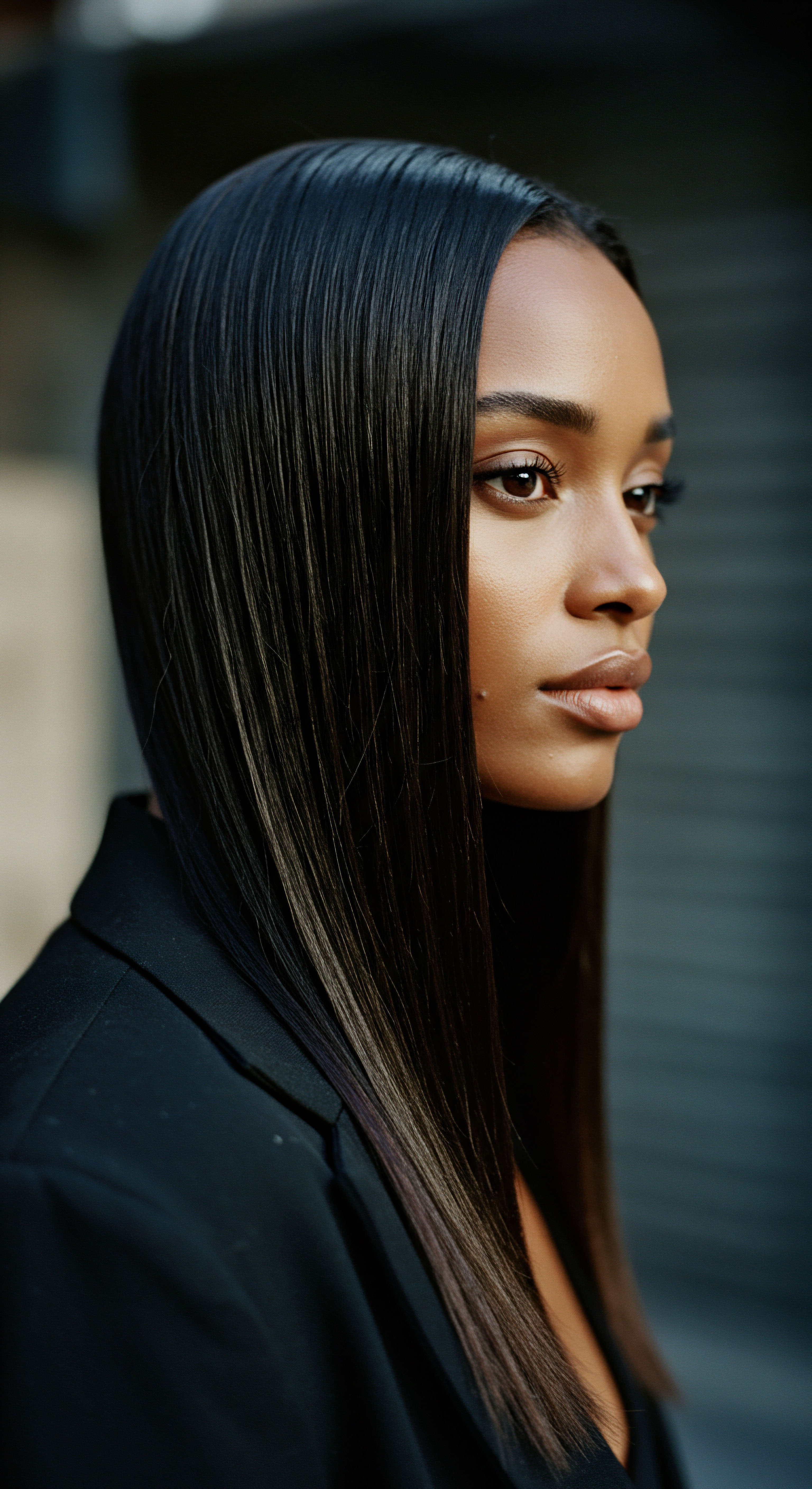
What Evidence Supports Internal Hair Repair by Silk Proteins?
Further evidence for internal action comes from studies observing the effect of hydrolyzed proteins on damaged hair. When hair is compromised, its cuticle scales lift, creating gaps and exposing the cortex. Hydrolyzed silk proteins, particularly those with low molecular weights (300 to 800 Daltons), are able to penetrate these exposed areas. They are thought to temporarily fill these voids, contributing to a smoother cuticle and, more importantly, lending support to the weakened internal protein network.
This “filling in” action can reduce porosity, which is the hair’s ability to absorb and retain moisture. By balancing porosity, silk proteins help the hair maintain its hydration levels more effectively, which in turn contributes to its strength and flexibility.
A compelling aspect of silk protein’s deeper interaction is its purported ability to influence the hair’s own keratin production. While direct, long-term stimulation of endogenous keratin synthesis from topical application remains an area of ongoing research, some sources suggest that hydrolyzed silk proteins can encourage the hair’s natural production of keratin. This implies a more profound, biological interplay, where the applied silk proteins act as a catalyst or a supportive presence, rather than simply a cosmetic coating. This is a subtle yet significant distinction, pointing towards a genuine contribution to hair’s intrinsic health.
A deeper look into the effects of silk proteins on hair reveals their potential to improve the hair’s resistance to damage.
| Hair Property Elasticity |
| Observed Benefit Increased resilience, reduced breakage |
| Mechanism of Action Internal interaction with cortex, possibly boosting keratin. |
| Hair Property Strength |
| Observed Benefit Improved resistance to stress |
| Mechanism of Action Filling cuticle gaps, reinforcing protein network. |
| Hair Property Moisture Retention |
| Observed Benefit Reduced water loss, lasting hydration |
| Mechanism of Action Binding to keratin, forming semi-occlusive barrier, intrinsic water-binding properties. |
| Hair Property Cuticle Smoothness |
| Observed Benefit Reduced frizz, enhanced shine |
| Mechanism of Action Laying down lifted cuticle scales, surface film formation. |
| Hair Property Thermal Protection |
| Observed Benefit Mitigated heat damage |
| Mechanism of Action Increasing internal and external water content, protective barrier. |
| Hair Property The table summarizes the multifaceted benefits of silk proteins, indicating their role beyond superficial improvements. |
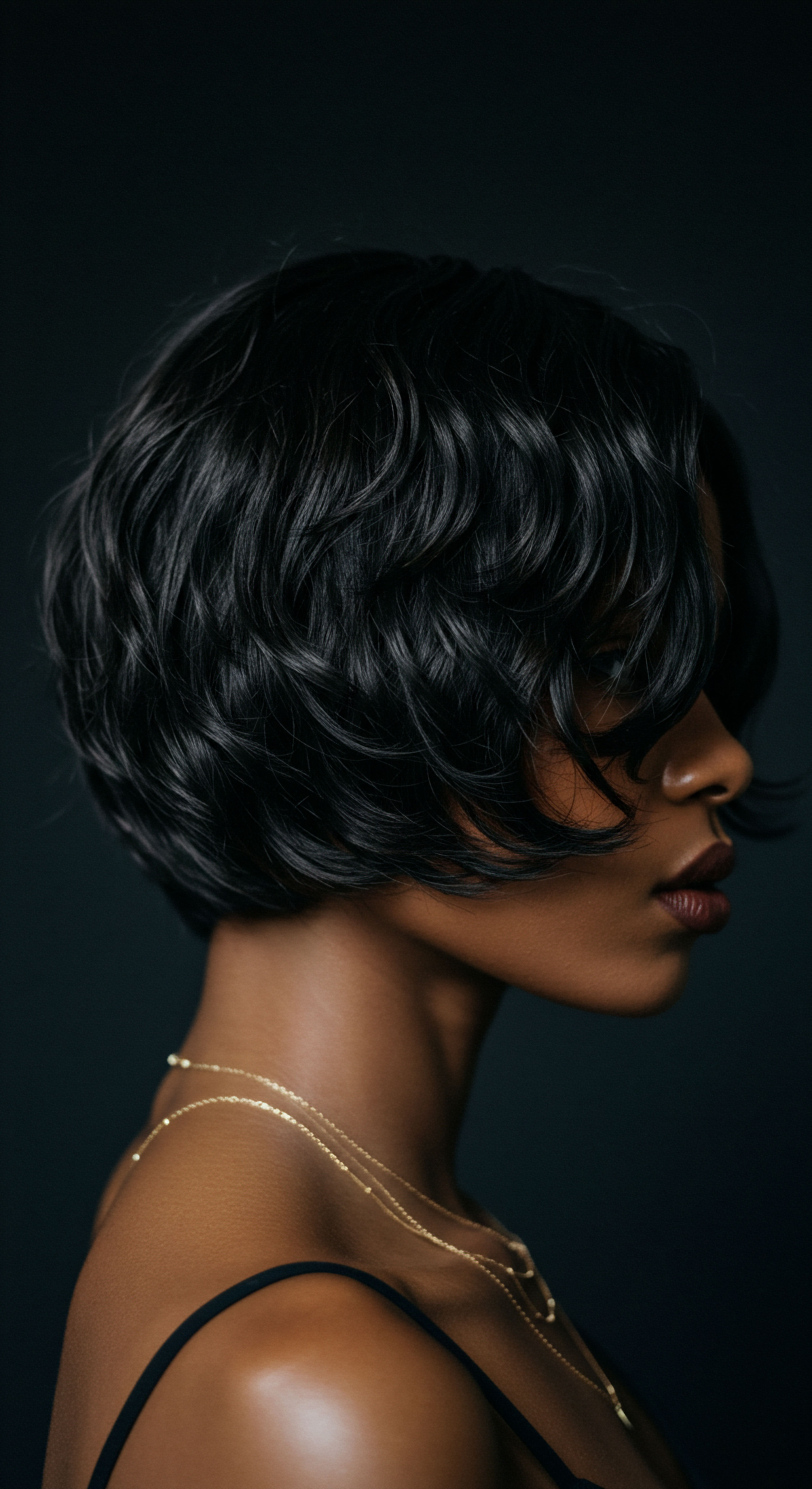
Cultural Context and Modern Science Intersect
The modern scientific investigation into silk proteins echoes ancient practices where silk was revered for its protective qualities. Cultures from East Asia to Africa and the Middle East intuitively understood silk’s role in preserving hair’s integrity. While these traditions may not have articulated the molecular mechanisms, their consistent application of silk in hair care, whether through wraps, bonnets, or infusions, speaks volumes about its perceived benefits.
This cultural wisdom, honed over centuries, now finds resonance in laboratory findings that reveal silk’s ability to reduce friction, retain moisture, and potentially even strengthen the hair fiber from within. The enduring use of silk in hair care, from the simplest nightcap to sophisticated modern treatments, serves as a powerful testament to its timeless efficacy.
One particularly interesting, though perhaps less commonly discussed, aspect of silk protein’s impact comes from a study examining the enzymatic crosslinking of amino acids to improve hair fiber repair. This research, while not solely focused on silk, demonstrates how serine, a prominent amino acid in sericin, can be cross-linked with keratin to form amide bonds. This process was shown to improve the firmness of the protein network within the hair, repairing the cortex layer and significantly enhancing resistance and elasticity.
This suggests a deeper, more biochemical interaction than mere surface adhesion, pointing to silk proteins’ components potentially participating in the actual restructuring of damaged hair, restoring it closer to a healthy state. This goes beyond just “filling in gaps” and hints at a more active, restorative role.
- Hydrolyzed Silk ❉ These proteins are broken down into smaller components for better absorption.
- Sericin’s Role ❉ The gummy protein of silk, sericin, has shown properties that enhance hair elasticity and hydration.
- Fibroin’s Contribution ❉ The core protein, fibroin, also contributes to moisture retention and forms protective layers.

Reflection
As we consider the journey through hair’s inner workings and silk’s surprising depth, a quiet understanding begins to settle. The notion that silk proteins simply smooth the hair’s outer surface seems to fade, replaced by a richer, more nuanced picture. We have seen how these delicate protein fragments, when prepared with care, can venture beyond the cuticle’s threshold, engaging with the very heart of the hair strand.
They offer more than just a fleeting sheen; they present a possibility of genuine support, a gentle hand guiding our hair back towards its inherent resilience. This quiet strength, rooted in both ancient wisdom and modern inquiry, invites us to view our hair care rituals not as mere routines, but as thoughtful acts of connection and profound self-regard.
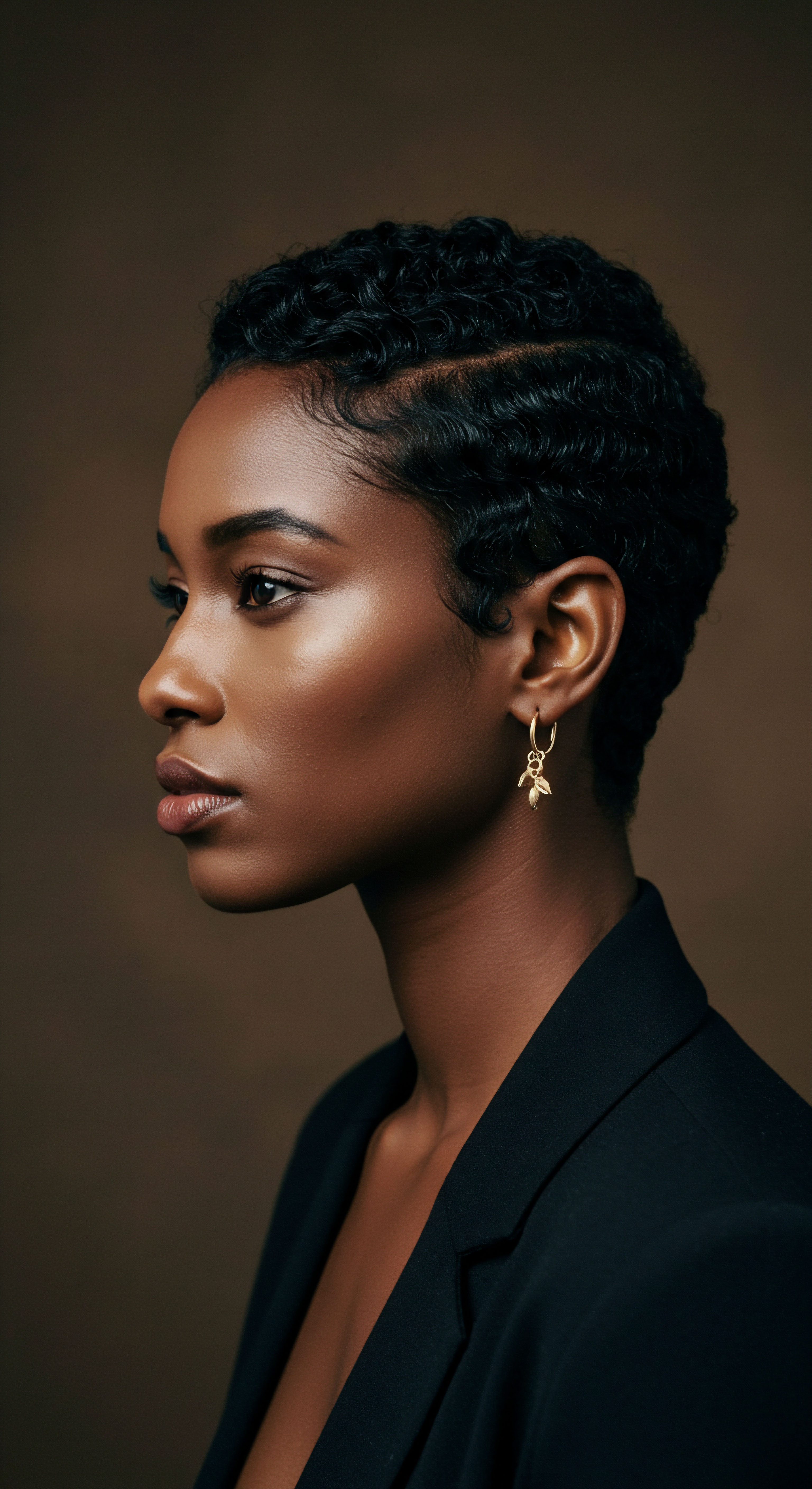
References
- Henne, A. & Hoppe, U. (1986). Sericin in cosmetic preparations. Journal of the Society of Cosmetic Chemists, 37(6), 373-386.
- Daithankar, A. V. Padamwar, M. N. Pisal, S. S. Paradkar, A. R. & Mahadik, K. R. (2004). Moisturizing efficiency of silk protein hydrolyzate ❉ Silk fibroin. Indian Journal of Biotechnology, 4(1), 115-121.
- Hata, T. (1987). Studies on hydrolyzed sericin as an excellent hair conditioner. Journal of the Society of Cosmetic Chemists of Japan, 21(3), 195-202.
- Engel, H. & Hoppe, U. (1988). Hair washing agents containing sericin and pelargonic acid. European Patent Application, EP0264177A2.
- Kirikawa, M. et al. (2000). Cosmetic powder containing fibroin and sericin. Japanese Patent Application, JP2000219616A.
- Miyashita, K. (1999). Silk powder for cosmetics. Japanese Patent Application, JP11080036A.
- Cao, X. & Zhang, Y. (2016). Recent advances in silk sericin for biomedical applications. BioMed Research International, 2016.
- Qadir, A. & Islam, S. (2020). Potential of silk proteins in cosmetics. International Journal of Applied Research, 6(10), 303-306.
- Camargo Jr, F. B. et al. (2022). Silk fibroin and sericin as promising biomaterials for hair care products. Journal of Cosmetic Science, 73(3), 205-218.
- Zhaorigetu, S. Yanaka, N. Sasaki, M. Watanabe, H. & Kato, N. (2004). Inhibitory effects of silk protein, sericin on UVB-induced acute damage and tumor promotion by reducing oxidative stress in the skin of hairless mice. Journal of Nutritional Biochemistry, 15(11), 663-670.
- Wang, J. et al. (2023). Enzymatic Crosslinking of Amino Acids Improves the Repair Effect of Keratin on Hair Fibre. Polymers, 15(10), 2321.